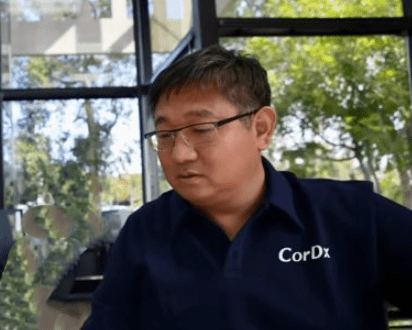Aiiso Yufeng Li’s net worth is a simple yet unanswered question that many people have concerning him. In actuality, there isn’t a public number. He is not included in Forbes’ list of billionaires for 2025, and Bloomberg has not released any credible projections. His wealth’s exposure through giving, which frequently conveys a more complex narrative than any spreadsheet, is evident, however. He and his family gave the University of California, San Diego almost $26 million in 2024. Among these were donations of $2.1 million to the NanoEngineering Department, $3 million to the Sustainable Power and Energy Center, and an astounding $21 million to the Department of Chemical and Nano Engineering. Even in the absence of exact net worth reports, these numbers alone show resources that are remarkably substantial.

In contrast to well-known businesspeople who reveal every accomplishment, Li keeps his background and schooling a secret. According to reports, he studied biology at Hebei Normal University and graduated in 2003; however, neither UCSD nor CorDx have formally verified this information. This lack of personal history has made him the subject of curiosity in recent years. Nevertheless, CorDx, the diagnostics business he established in 2006 and which has developed into a very effective participant in the healthcare diagnostics market, has significantly shaped his career.
| Full Name | Aiiso Yufeng “Jeff” Li |
|---|---|
| Date of Birth (Age in 2025) | Not publicly available |
| Nationality | Based in San Diego, United States |
| Profession | Businessman, Founder & Chief Strategy Officer of CorDx |
| Known For | $21M gift to UCSD Chemical & Nano Engineering, plus $3M and $2.1M gifts in 2024 |
| Marital Status | Married to DongDong “Doreen” Li |
| Net Worth | Not disclosed (not listed by Forbes or Bloomberg) |
| Company | CorDx, diagnostics company founded in 2006 |
| Advisory Roles | UCSD Jacobs School Council of Advisors, UCSD Foundation Trustee |
| Reference |
The trajectory of CorDx is incredibly successful in showing how a relatively tiny business can establish itself in a field that is dominated by industry titans. CorDx quickly advanced its testing methods during the COVID-19 pandemic, and in 2024, the FDA granted it Emergency Use Authorization for their TyFast Flu A/B & COVID-19 multiplex test. This was especially creative since it put CorDx in line with other businesses like Abbott that were providing tests across the country. The business keeps improving testing techniques that are quicker and much more accurate by utilizing AI-driven technology. This change feels particularly significant for an industry that has long been chastised for its inefficiencies and delays.
Li’s influence is especially noticeable in philanthropy. He is doing more than just contributing money by supporting academic departments at UCSD; he is securing his family name in the intellectual framework of one of the top research universities in the United States. Naming rights are symbolic but incredibly potent since they guarantee a legacy connected to both knowledge development and philanthropy. Benefactors like Charles Munger and David Geffen have taken similar actions, demonstrating how philanthropy is influencing the next wave of scientific advancement. Li’s contributions have been especially helpful in light of San Diego’s quickly expanding biotech environment, enhancing the city’s standing as a center for sustainability and engineering research.
His union with DongDong “Doreen” Li further emphasizes the family’s cohesive strategy. They are regularly featured together in UCSD announcements, not only as contributors but also as collaborators in furthering education and research. Their participation in these programs serves as a symbol of their long-term dedication to sustainable advancement rather than just for prestige. They are allocating their resources to the kind of forward-thinking work that benefits society as a whole by concentrating on fields like clean energy and nanoengineering.
It may seem odd that there isn’t a Forbes profile or a Bloomberg wealth figure, but it could be deliberate. Instead of using financial rankings, many private entrepreneurs would rather have their influence gauged by impact. Low-profile donors like Hansjörg Wyss, whose conservation gifts changed the way land is used in America, and Charles Feeney, who quietly donated billions, have already exhibited this tendency. Li meets this description, subtly but significantly influencing research, diagnoses, and education in ways that could be very enduring.
It is impossible to overestimate the influence of his skills on society. Programs related to renewable energy and nanoengineering have been much more visible since the UCSD announcement. The university has positioned itself more competitively for funds, more research initiatives have gained traction, and more students have applied. Better financing and infrastructure are not only beneficial, but transformative for early-stage scientists. As a result, Li’s investments are having an impact that goes well beyond UCSD’s boundaries, into labs and classrooms, and eventually into the technologies that regular people will use.
Even now, CorDx remains an intriguing research tool for growth and resilience. The corporation has greatly decreased its dependence on foreign supply chains, a vulnerability that was painfully obvious during the pandemic, by increasing its production capacity in the United States. This choice ensures stability during times of crisis and is both patriotic and sensible. It also demonstrates how imaginative entrepreneurial foresight can be, opening doors for other businesses to follow.
Li’s riches may not be as fascinating to those who closely observe him as how he uses it. CorDx’s scientific pursuits and his family’s charitable endeavors combine to provide an extraordinarily flexible platform for influence. In addition to creating diagnoses, he is paving the way for future researchers who could further transform medicine. This simultaneous emphasis on academic investment and industry innovation creates a legacy that seems incredibly resilient.
